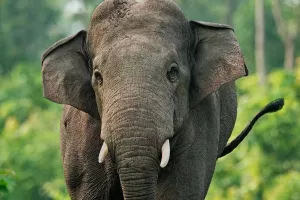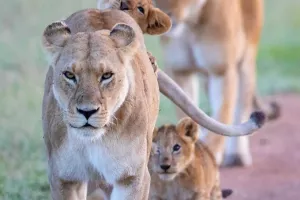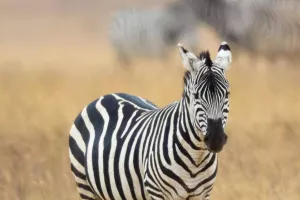Antelope are well known for their graceful appearance and impressive horns. However, when we think of antelope, it’s easy to assume that they are specific group of animals. In fact, “antelope” is a term used to describe members of the Bovidae family that are not sheep, cows, or goats. Here we’ll discover the largest antelopes in the world ranked by height.
1. Giant Eland
The largest antelope in the world is the giant eland. Measuring an incredible shoulder height of 6 feet and a length of more than 9 feet, they are certainly giants. Giant elands are found in open forests and savannahs in Cameroon, Central African Republic, Chad, Democratic Republic of the Congo, Guinea, Mali, Senegal, and South Sudan. They are reddish-brown with vertical white stripes on their bodies, and tightly spiraled horns. Giant elands are mostly nocturnal and are naturally wary. Their main form of defense against predators is speed, and their predators include lions, hyenas, and crocodiles. There are two subspecies of giant elands – western and eastern. Eastern giant elands are classed as vulnerable, while western giant elands are critically endangered. The main threats to them are hunting and habitat destruction.
2. Common Eland
Reaching a shoulder height of 5ft 3in, common elands come in at number two. Common elands are found in the open savannahs of east and south Africa. Females are a tan color, while males are a blueish-grey. Common elands often have distinctive stripes and markings, but these differ depending on whether they are from the northern most part of their range or not. Both males and females have horns that spiral tightly, and males also have large dewlaps underneath their chins. Although common elands are one of the slowest antelopes (only reaching 25 mph), they can jump an incredible 8ft 2in from a standstill.
3. Roan Antelope
Roan antelope are widespread across Africa and are often confused with sable antelope. With a shoulder height of 5ft 3in, roan antelopes are easily one of the largest antelopes on the list. Roan antelopes are a reddish-brown color with lighter hair under their bellies. They also have white patches on their faces and horns which can be more than 3 feet long. Roan antelopes are found in mainly in grasslands and savannahs where they eat mid-length grasses. Roan antelopes can breed at any time of the year and females hide their young in long grass for the first few weeks after birth to so they can hide from predators and feed in solitude. Lions are their main predator, but roan antelopes can be extremely aggressive and defensive towards other predators, and so aren’t preyed on as much as other antelopes.
4. Antelope: Nilgai
Also known as blue cows, nilgai are found in India, Nepal, and Pakistan and prefer scrub forests and grasslands. They are the largest antelope in Asia and reach 4ft 11in. Nilgai can easily be distinguished by their sturdy appearance, sloping back, and white patch under their throats. Females are tan, while males are a striking bluish-grey and have small horns. Nilgai live in small groups of less than 10 animals with males and females separate. Although they are extremely cautious antelopes and quickly flee in the face of danger, both sexes are prone to fighting amongst themselves. Fights often involve nilgai ramming each other with their horns and pushing their necks against each other. Leopards are the main predators of nilgai, although wolves and hyenas also sometimes kill them.
5. Waterbuck
Waterbucks are large antelopes that live across south and eastern Africa. There are 13 recognized subspecies of waterbuck, but most are between 4 feet and 4ft 7in at the shoulder with males both taller and longer than females. Waterbuck are reddish-brown and their coats get darker as they get older. They have white muzzles, a white patch on their throat, on their rump, and inside their ears. Only males have horns, and they are particularly distinctive as they curve backwards and then curve forwards at the top. Waterbuck cannot cope for long without water in hot weather, so are usually found in scrubland and grasslands near to rivers and lakes.


